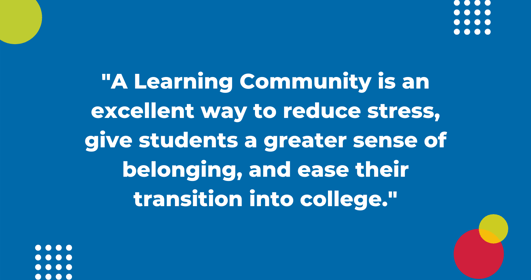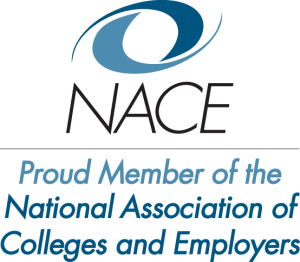How Learning Communities Lead to Educational and Vocational Success
Learning Communities and Students
As college becomes more and more expensive, students and their parents are looking to lock down a solid Return on Investment (ROI) in postsecondary education. The current ROI is significantly less than it was in 1990, with the median earnings of graduates being lower today.
This desire for a good ROI leads to students wanting assurance of success (or as close as they can get to one). For many students, this assurance comes in the form of a high-quality college with strong academics (and perhaps good athletics).
This leads to colleges and universities competing not only with each other but with themselves. They want to show their ROI by announcing their acceptance rates, graduation rates, student quality, class size, and so on.
There are many ways to give students some security in the possibilities of future success, such as supporting them with great career services at colleges and universities or making sure they do proper financial planning. Another great way to give learners confidence in their future is by surrounding them with a learning community.
One of the most important components to any learning community is a student's faculty and staff. Often, during orientation students go over who will be their professors. The hope for many students is that they are not only great lecturers but also mentors in some sense.
This gives them more than just access to knowledge; it opens up resources, networks, and opportunities. In the words of Dr. Bruce Smith, "Creating a sense of belonging is paramount in the development of young adults."
This becomes even more important when you realize that student retention rates at colleges have been falling since 2000, with many students citing concerns about academic quality as a reason for leaving.
Learning Communities Create Community and Connection
One huge advantage of creating a learning community for your students is that it makes the value of a peer group immediately apparent. Students will need to learn networking skills to advance in their careers, and a learning community is a low-risk environment in which they can develop these skills.
This creates a sense of community and helps students connect with other learners because they are all going through the same experiences.
Essentially, your student's success is connected to that of their peers, as well as yours (as a faculty member). Engaging in relationships with your students will help build up confidence and better interaction with each other. In turn, this will lead to better communication between faculty and students, leading to more open dialogue.
By surrounding your students with a community of support, you can create a sense of togetherness that also helps unite your experience for them.
Furthermore, the sense of camaraderie can give learners a chance to support each other, exchange ideas, and even learn about new career paths. Much like a comprehensive career assessment, exposure to many other aspiring professionals can lead to students expanding their horizons and discovering new paths.
This is important because the workplace of today and tomorrow requires some level of flexibility and versatility. Students who have a wide variety of experiences and information are better able to succeed in their journeys as they often become empowered with new opportunities, resources, contacts, and even lifestyles (such as remote work options).
Learning Communities Ease College Transition
In October 2020, 62.7 of 2020 high school graduates were enrolled in college. Students who go straight from high school to college can have some difficulty transitioning, but a learning community can serve as a useful step in between.
For many students, their first time living away from home is a huge adjustment. It can be an emotional roller-coaster and full of unknowns. This is where your learning community comes into play to help ease these challenges.
In high school, most students see the same peers every day and establish friendships simply through the amount of time they spend together. In college, that’s sometimes not the case. Students can become overwhelmed by the pace and lack of consistent faces.
One way to ease this transition into college is by creating a community of learners around your students. Give them access to professionals in the field through guest speakers, mentoring, and networking events. By surrounding their learning with practical applications from experts, you can help students not only see how they might fit into the workplace but also what’s expected of them.
This is also important because students who feel like they are part of a community tend to be happier, have better grades, and often stay longer in college than their peers. They also tend to perform better on tests. The camaraderie helps build resilience, reduce anxiety and give confidence in taking the next steps into the workforce.
A learning community, which usually has a class size group of students all taking classes together, can give the consistency of high school as students all learn to navigate college together. Students will have multiple people to turn to when they have a question. This can help reduce the amount of stress, encourage peer interaction and give students a greater sense of belonging.
A learning community also gives them access to more resources such as career centers that provide workshops on job searching or even basic assistance like writing cover letters or resumes.
@JobZology says that creating a learning community can help you offer students a great college experience by giving them a sense of community and direction. @JobZology
Measure Collective Progress and Leverage Data
Having learners in a focused, professional learning community makes it easier for you to measure their growth as a whole. You’ll be able to track their progress from grades, graduation rates, job search statistics, and even employment rates.
These are all valuable statistics that you can leverage to improve your curriculum and understand the needs of your students. For departments, this means they’ll have more accurate data on how their programs or courses are performing. You might discover if certain classes need improvement or if there is a better way of delivering the learning material.
From there, you can leverage this data to prove the effectiveness of your learning community. The data you collect serves a dual purpose; it attracts new students and learners to your community and also attracts top employers to your organization.
When employers have an idea of which programs have better employment numbers, they’ll be more likely to partner with you and invest in the future of talent development. By building a learning community around your students, you’re not only helping them succeed in college but also creating a pool from which those same students will graduate into the workforce.
A learning community can help reduce stress, give students a greater sense of belonging, and help them transition into life after college. They’re also an excellent way to measure student progress, identify any weak points in your curriculum, and ultimately improve the value you offer to students, potential employers, and the economy at large.

Collecting and leveraging this data will allow you to create a more robust learning community, gain more members, enhance your career counseling services, and evolve the kind of support you provide students.
Learning Communities Can Extend Career Counseling Services
Having students in a learning community allows you to continue your support long after graduation. Your learning community is an entity in and of itself. Employers will view it as a resource to find the most talented, dedicated learners. Graduating students will see your program as a way to stay in touch with the industry.
Your community can be an invaluable resource to current and former students. You can offer events that encourage networking among alumni or even keep graduates actively involved in career planning and tracking their progress, you can help them on a continual basis with any issues they have along the way.
For employers, this means that they know your program is a hub for the best talent available and they’re more likely to partner with you to develop their own company’s future workforce.
Through your continued support of graduates, your students who are still in school will benefit from the established connections with employed individuals. You can capitalize on this opportunity to pair them with mentors and host job fairs.
You can also give current students access to these resources. If you have a job posting, as a part of the learning community your students are already online and easily viewable by employers. They’ll be able to network among themselves and build relationships with their classmates that will serve them well as they graduate into the real world.
The direct connection between young students and people is a marketable service that will lead to your learning community developing a stronger industry presence. Also, the promise of your continued support will help keep your students engaged.
Generate More Interest in Your Learning Community
When you offer a learning community, it’s important to be as welcoming and inviting as possible. To become part of the community, students need to feel like they’re joining a connected network that has their best interests at heart.
Establishing a learning community could be an extremely valuable service to your students. They’ll gain support from each other, easily set up connections that will help them in their academic and vocational career, and receive your support after they graduate.
The ability to stick with students as they transition through life after college will make your program stand out. For more information on how to guide your students to the perfect career path, please visit pathwayu.com!
-1.png?width=288&height=67&name=PathwayU_PGLogo%20(1)-1.png)




